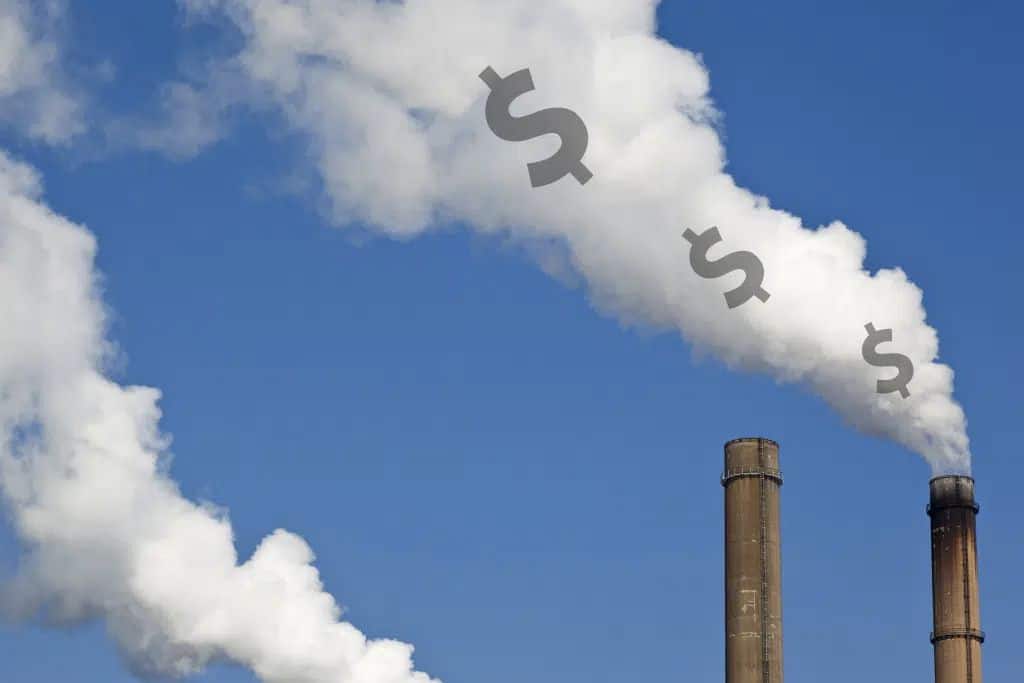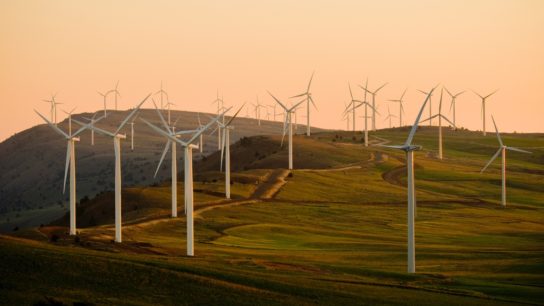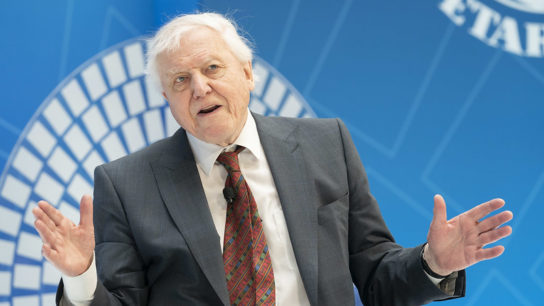As governments allocate increasing proportions of their budgets for climate action, the debate over which tools should be employed is intensifying. While regulation and subsidies have been the most widely used approaches, market-based approaches such as carbon taxes and cap-and-trade schemes, albeit facing significant political hurdles, offer more efficient alternatives in the global fight against climate change.
—
Firms produce goods to maximize profits for their shareholders. It is their fiduciary responsibility to do so.
Firms utilizing fossil fuels in their production processes take into account the private costs of procuring and using those fuels – mining, processing, transporting and burning them at the production site. However, by burning fossil fuels, these firms also emit greenhouse gasses (GHGs) that accumulate into the atmosphere, raising temperatures and exacerbating climate change.
The societal damage caused by climate change represents an externality – costs that firms do not bear, unless carbon taxes or regulations are in place. As a result, firms tend to burn more fossil fuels than would be socially optimal. For instance, if firms burning coal to produce electricity had to account for the costs of environmental damage, they would be incentivised to switch to lower-carbon fuels like natural gas, which emits only a third of the carbon emissions of coal.
What is good for a firm’s shareholders may not be best for society. Policy tools are therefore needed to influence firms behavior and ensure that firms internalize the social costs of their actions.
The Spectrum of Climate Policies: Carrot and Stick
Climate policy tools can be broadly categorized into two types: those that penalize carbon emissions (“sticks”) and those that incentivise the adoption of zero and lower-carbon technologies (“carrots”).
One of the most widely used “stick” strategies is regulation. The Clean Air Act of 1970 and the establishment of the Environmental Protection Agency (EPA) in the US marked the beginning of environmental regulation. Dozens of countries followed suit. Environmental regulation has been instrumental in limiting carbon emissions and other pollutants from heavy industries. However, economists often view regulation as a less efficient means of addressing the carbon emissions externality.
Regulation, or the command-and-control approach, works by enforcing uniform behavior across all firms within an industry. For instance, regulations following the US Clean Air Act mandated coal-fired power plants to install scrubbers to reduce their sulfur emissions. In order to install and maintain scrubbers, firms incurred significant costs, even though some managed to achieve similar reductions more cheaply by switching to low-sulfur coal. By mandating specific standards over all firms in an industry, regulation takes away the flexibility of firms to choose the most cost-effective way to cut emissions.
Moreover, firms in different industries face varying marginal costs of reducing emissions. For example, while vehicle manufacturers producing internal combustion engines – a technology already nearing its efficiency limits – may incur exorbitant costs to achieve further gains, electricity producers using coal or natural gas could achieve similar reductions at much lower costs. If policymakers do not account for these differences across industries, regulating firm behavior can lead to higher overall costs per unit of emissions reduction, compared to market-based mechanisms like carbon taxes.
On the other end of the policy spectrum, subsidies are a widely used “carrot” tool to encourage the proliferation of zero and lower-carbon technologies. China, for instance, has emerged as a leader in green manufacturing, thanks to the government’s generous green subsidies. These subsidies have driven significant advancements in renewable technologies and massive economies of scale, leading to dramatic price declines over the past decade (80% for solar and electric batteries, 73% for offshore wind and 57% for onshore wind).
While subsidies are essential for fostering innovation, they can have unintended consequences.
Production-based subsidies tend to reduce the cost of energy rather than increase it. In wind-heavy regions of the US, such as Kansas, western Oklahoma and the Permian basin in western Texas, production subsidies have even led to negative energy prices. Extremely low marginal costs, combined with production tax incentives, allow wind energy producers to continue supplying electricity even when prices dip below zero. Low (and negative) energy prices encourage higher electricity consumption and reduce incentives for firms and individuals to invest in energy-efficient appliances and manufacturing technologies, respectively. This, in turn, increases overall energy demand rather than decreasing it.
Subsidies are also costly for governments. President Biden’s 2022 Inflation Reduction Act, one of the most ambitious subsidy packages to date, is projected to have a fiscal impact of nearly US$1 trillion over the next decade. Covering these costs would require additional revenue sources, such as raising taxes.
Subsidies can also have distributional consequences. A 2024 study found that, between 2006 and 2021, out of the $47 billion clean energy tax credits received by US households, the richest 20% received about 60% of the credits, while the poorest 60% received only 10%. In addition, the study found little correlation between the availability of tax credits and clean energy adoption, suggesting that these subsidies played a minimal role in incentivising clean energy adoption. In other words, those who bought electric cars, heat pumps and solar panels likely would have done so regardless of the subsidies.
You might also like: Carbon Tax Pros and Cons: Is Carbon Pricing the Right Policy to Implement?
Why Economists Love Carbon Taxes
Carbon taxes offer a more efficient alternative to regulation. A carbon tax explicitly increases the price of pollution and allows firms to decide how to respond. For example, if the Clean Air Act had imposed a carbon tax on coal plants, firms could have chosen whether to install scrubbers, switch to low-sulfur coal, or simply pay the tax. The revenue from carbon taxes could then be used to reduce other taxes, as was done in the Nordic countries during their early 1990s tax restructurings. Extending the tax across industries through a broad-based carbon tax incentivises firms to reduce emissions where it is most cost-effective. This, in turn, allows the market to find the best ways to account for the social cost of carbon.
A cap-and-trade system is another way to explicitly price carbon, where the government sets a cap on total emissions and lets the market figure out how best to meet that cap. Firms receive emissions allowances – essentially “rights to pollute” –that can be traded in the market. Firms that find it too expensive to meet their quota can buy additional allowances, while firms that can reduce emissions at lower costs can sell their excess allowances. The monetisation of emissions provides an additional incentive for firms to cut emissions: excess polluters can save costs by reducing emissions and buying fewer allowances, while firms that reduce emissions beyond their quota can profit by selling additional allowances in the market.
The EU’s Emissions Trading System (EU ETS), the world’s largest cap-and-trade scheme, now covers almost 40% of the bloc’s emissions. Although carbon prices under the EU ETS remained low initially, they have risen over time.
Political Considerations
Despite their economic superiority, carbon pricing mechanisms – whether through taxes or cap-and-trade systems – are politically challenging to implement. For one, they disproportionately affect carbon-intensive industries, such as petroleum, iron, and steel, which often have strong lobbying power. Additionally, the benefits of carbon pricing – limiting climate change – are not immediately visible, as they tend to accrue only gradually over decades. On the contrary, the immediate price increases associated with carbon pricing can lead to political backlash.
In India, for instance, electricity generation, of which 55% comes from coal, accounts for 34% of the country’s greenhouse gas emissions. However, in a democratic system where the expectation of subsidized electricity is deeply ingrained, almost all jurisdictions in the country offer some amount of subsidies on electricity. In such a system, imposing a carbon tax on electricity generation would be akin to political suicide.
Subsidies, in contrast, are politically easier to implement. They address peoples’ concerns about climate change without alienating workers and firms in carbon-intensive industries.
Nevertheless, as reported in the World Bank’s Carbon Pricing Dashboard, a growing percentage of global emissions are now subject to some form of carbon pricing, reflecting an increase in the adoption of such mechanisms. Unilateral policies like the European Union’s Carbon Border Adjustment Mechanism (EU CBAM) are also making carbon pricing more politically feasible for other countries to implement.
The question still remains: Are market-based policies the best solution to address a problem that originated from the market itself?
This story is funded by readers like you
Our non-profit newsroom provides climate coverage free of charge and advertising. Your one-off or monthly donations play a crucial role in supporting our operations, expanding our reach, and maintaining our editorial independence.
About EO | Mission Statement | Impact & Reach | Write for us














